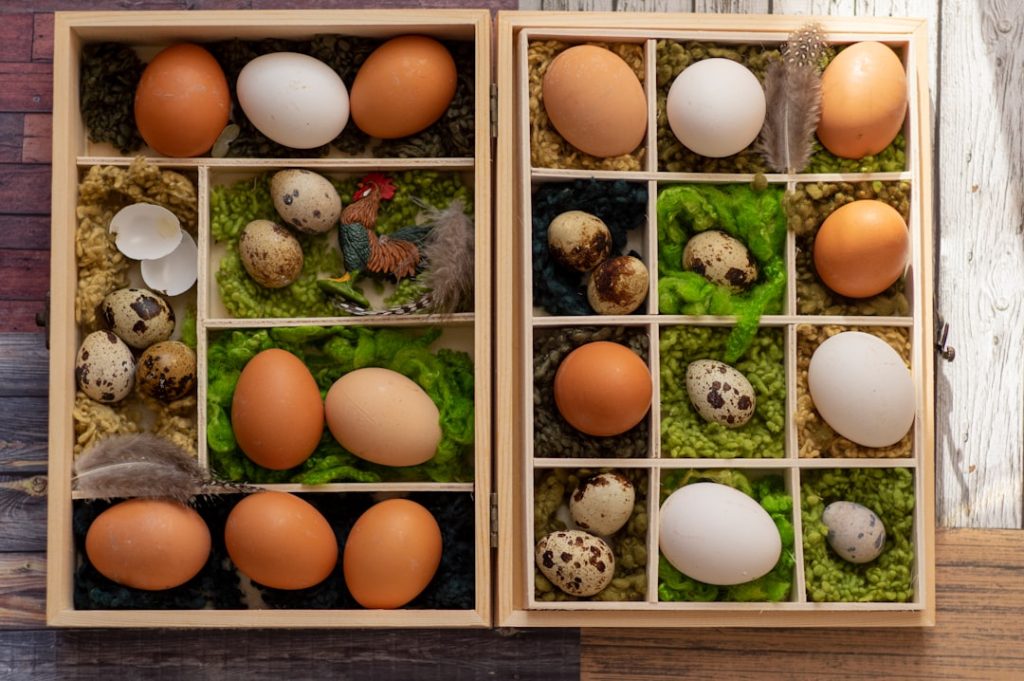Coyotes are highly adaptable and intelligent animals known for their opportunistic behavior. They are primarily nocturnal hunters but can also be active during the day, especially in areas with less human activity. Coyotes are skilled at finding food sources, and chickens are a common target for them.
They are excellent diggers and climbers, which allows them to easily access chicken coops and enclosures. Coyotes are territorial animals, and once they identify a potential food source, they may return to the area repeatedly. These predators are also known for their ability to work together in packs, making them even more formidable.
Coyotes are highly social animals and often hunt in groups, which can increase their danger to chickens. Understanding the behavior and habits of coyotes is crucial in developing effective strategies for protecting chickens from these predators.
Table of Contents
- 1 Securing the coop: Best practices for protecting chickens
- 2 Implementing deterrents: How to discourage coyotes from approaching
- 3 Using guardian animals: The role of dogs and other animals in protecting chickens
- 4 Creating a safe environment: Tips for designing a coyote-proof chicken habitat
- 5 Nighttime precautions: Strategies for keeping chickens safe after dark
- 6 Dealing with encounters: What to do if a coyote approaches the coop
- 7 FAQs
- 7.1 What are the main threats to chickens from coyotes?
- 7.2 How can I keep my chickens safe from coyotes?
- 7.3 What type of fencing is best for keeping coyotes out of the chicken coop?
- 7.4 Are there any other predators I should be concerned about when keeping chickens?
- 7.5 What should I do if I encounter a coyote near my chicken coop?
Key Takeaways
- Coyotes are intelligent and adaptable predators that are known to be opportunistic and will take advantage of easy prey, such as chickens.
- Securing the coop with sturdy fencing, hardware cloth, and a secure locking mechanism is essential for protecting chickens from coyote attacks.
- Implementing deterrents such as motion-activated lights, noise makers, and scent repellents can help discourage coyotes from approaching the chicken coop.
- Guardian animals, such as dogs, can play a crucial role in protecting chickens from coyote attacks by patrolling the area and deterring predators.
- Creating a safe environment for chickens involves designing a coyote-proof habitat with features such as elevated roosts, secure nesting boxes, and predator-proof fencing.
- Nighttime precautions, such as locking chickens in a secure coop and using motion-activated lights, can help keep chickens safe from coyote attacks after dark.
- If a coyote approaches the coop, it’s important to make loud noises, throw objects, and use deterrents to scare the coyote away, and to report the encounter to local wildlife authorities.
Securing the coop: Best practices for protecting chickens
Using Hardware Cloth for Maximum Protection
One of the best practices for securing the coop is to use hardware cloth instead of chicken wire. Hardware cloth is a sturdy wire mesh that is more difficult for coyotes to chew through or tear apart. It should be used to cover all openings in the coop, including windows and vents, to prevent coyotes from gaining access to the chickens.
Burying the Hardware Cloth and Regular Inspections
Another important practice is to bury the hardware cloth at least 12 inches into the ground around the perimeter of the coop. This will prevent coyotes from digging under the fence to gain access to the chickens. Additionally, it is important to regularly inspect the coop for any signs of wear or damage to the fencing or mesh, and make repairs as needed to ensure that it remains secure.
Securing the Surrounding Area
In addition to securing the coop itself, it is also important to secure the surrounding area. This can be done by installing motion-activated lights or sound devices around the coop to deter coyotes from approaching. Keeping the area around the coop clear of brush and debris can also help reduce hiding spots for coyotes, making it easier to spot them if they do approach.
Implementing deterrents: How to discourage coyotes from approaching
In addition to securing the coop, there are several deterrents that can be implemented to discourage coyotes from approaching. One effective deterrent is the use of scent repellents, such as predator urine or ammonia-soaked rags, placed around the perimeter of the coop. These scents can help create a barrier that deters coyotes from approaching.
Another effective deterrent is the use of noise-making devices, such as motion-activated alarms or radios set to loud talk radio stations. These devices can startle and deter coyotes from approaching the coop. Additionally, installing a motion-activated sprinkler system can also be an effective deterrent, as coyotes do not like being sprayed with water.
It is important to regularly change the location of scent repellents and noise-making devices to prevent coyotes from becoming accustomed to them. By implementing these deterrents, it is possible to discourage coyotes from approaching the coop and reduce the risk of attacks on chickens. In addition to securing the coop, there are several deterrents that can be implemented to discourage coyotes from approaching.
One effective deterrent is the use of scent repellents, such as predator urine or ammonia-soaked rags, placed around the perimeter of the coop. These scents can help create a barrier that deters coyotes from approaching. Another effective deterrent is the use of noise-making devices, such as motion-activated alarms or radios set to loud talk radio stations.
These devices can startle and deter coyotes from approaching the coop. Additionally, installing a motion-activated sprinkler system can also be an effective deterrent, as coyotes do not like being sprayed with water. It is important to regularly change the location of scent repellents and noise-making devices to prevent coyotes from becoming accustomed to them.
By implementing these deterrents, it is possible to discourage coyotes from approaching the coop and reduce the risk of attacks on chickens.
Using guardian animals: The role of dogs and other animals in protecting chickens
Guardian animals can play a crucial role in protecting chickens from coyote attacks. Dogs are one of the most effective guardian animals for this purpose, as they have a natural instinct to protect their territory and can serve as a deterrent to coyotes. Breeds such as Great Pyrenees, Anatolian Shepherds, and Akbash dogs are known for their ability to protect livestock from predators and can be trained to protect chickens as well.
In addition to dogs, other animals such as llamas and donkeys can also serve as effective guardian animals for chickens. These animals have a natural instinct to protect smaller animals in their care and can help deter coyotes from approaching the coop. By using guardian animals in conjunction with other protective measures, such as securing the coop and implementing deterrents, it is possible to create a multi-layered defense system that can effectively protect chickens from coyote attacks.
Guardian animals can play a crucial role in protecting chickens from coyote attacks. Dogs are one of the most effective guardian animals for this purpose, as they have a natural instinct to protect their territory and can serve as a deterrent to coyotes. Breeds such as Great Pyrenees, Anatolian Shepherds, and Akbash dogs are known for their ability to protect livestock from predators and can be trained to protect chickens as well.
In addition to dogs, other animals such as llamas and donkeys can also serve as effective guardian animals for chickens. These animals have a natural instinct to protect smaller animals in their care and can help deter coyotes from approaching the coop. By using guardian animals in conjunction with other protective measures, such as securing the coop and implementing deterrents, it is possible to create a multi-layered defense system that can effectively protect chickens from coyote attacks.
Creating a safe environment: Tips for designing a coyote-proof chicken habitat
Designing a coyote-proof chicken habitat involves creating a secure environment that minimizes opportunities for coyote attacks. One important aspect of designing a safe habitat is ensuring that there are no hiding spots for coyotes near the coop. This can be achieved by keeping the area around the coop clear of brush and debris, which makes it easier to spot any potential threats.
Another important consideration is the layout of the habitat. It is important to design the habitat in a way that minimizes potential entry points for coyotes. This may involve using fencing or barriers to create a secure perimeter around the coop and run area.
Additionally, it is important to ensure that there are no gaps or weak points in the fencing that could allow coyotes to gain access. In addition to securing the perimeter of the habitat, it is also important to provide secure housing for chickens within the coop itself. This may involve using sturdy materials such as hardware cloth for fencing and ensuring that there are no gaps or weak points in the structure that could allow coyotes to gain access.
By designing a habitat that minimizes opportunities for coyote attacks, it is possible to create a safe environment for chickens. Designing a coyote-proof chicken habitat involves creating a secure environment that minimizes opportunities for coyote attacks. One important aspect of designing a safe habitat is ensuring that there are no hiding spots for coyotes near the coop.
This can be achieved by keeping the area around the coop clear of brush and debris, which makes it easier to spot any potential threats. Another important consideration is the layout of the habitat. It is important to design the habitat in a way that minimizes potential entry points for coyotes.
This may involve using fencing or barriers to create a secure perimeter around the coop and run area. Additionally, it is important to ensure that there are no gaps or weak points in the fencing that could allow coyotes to gain access. In addition to securing the perimeter of the habitat, it is also important to provide secure housing for chickens within the coop itself.
This may involve using sturdy materials such as hardware cloth for fencing and ensuring that there are no gaps or weak points in the structure that could allow coyotes to gain access. By designing a habitat that minimizes opportunities for coyote attacks, it is possible to create a safe environment for chickens.
Nighttime precautions: Strategies for keeping chickens safe after dark

Locking Chickens Inside the Coop
One effective strategy is locking chickens inside their secure coop at nightfall when they are most vulnerable. This prevents them from being exposed to potential predators such as coyotes.
Deterrent Measures
Additionally, installing motion-activated lights around the perimeter of the coop can help deter nocturnal predators like coyotes by startling them with sudden bursts of light when they approach. Another precautionary measure involves using automatic door openers on chicken coops which close at dusk and open at dawn without requiring human intervention.
Securing Food Sources
Furthermore, ensuring that all food sources are secured inside at night will help prevent attracting nocturnal predators like coyotes who may be drawn by food left outside after dark.
By implementing these nighttime precautions, chicken owners can significantly reduce their risk of losing their flock to nocturnal predators like coyotes.
Dealing with encounters: What to do if a coyote approaches the coop
Despite best efforts in prevention and protection measures, there may still be instances where a coyote approaches a chicken coop. In such cases, it’s important for chicken owners to know how best to handle these encounters in order to protect their flock. If a coyote approaches a chicken coop during daylight hours when chickens are outside, it’s crucial not to leave them unattended as this increases their vulnerability.
If a chicken owner encounters a coyote near their coop during daylight hours when chickens are outside, making loud noises or using scare tactics such as banging pots together or using air horns can help frighten off the predator and protect their flock. In cases where encounters occur at night when chickens are secured inside their coop, it’s best not to confront or attempt physical contact with a wild animal like a coyote but rather call local animal control or wildlife authorities for assistance. In situations where encounters with coyotes become frequent or pose an ongoing threat despite preventative measures being taken, seeking professional assistance from wildlife experts may be necessary in order to ensure long-term safety for both chickens and their owners.
Despite best efforts in prevention and protection measures, there may still be instances where a coyote approaches a chicken coop. In such cases, it’s important for chicken owners to know how best to handle these encounters in order to protect their flock. If a coyote approaches a chicken coop during daylight hours when chickens are outside, it’s crucial not to leave them unattended as this increases their vulnerability.
If a chicken owner encounters a coyote near their coop during daylight hours when chickens are outside, making loud noises or using scare tactics such as banging pots together or using air horns can help frighten off the predator and protect their flock. In cases where encounters occur at night when chickens are secured inside their coop, it’s best not confront or attempt physical contact with a wild animal like a coyote but rather call local animal control or wildlife authorities for assistance. In situations where encounters with coyotes become frequent or pose an ongoing threat despite preventative measures being taken, seeking professional assistance from wildlife experts may be necessary in order ensure long-term safety for both chickens and their owners.
If you’re looking for a reliable chicken coop to keep your flock safe from predators like coyotes, you might want to consider the Producers Pride Sentinel Chicken Coop. This coop is designed with safety in mind, providing a secure and comfortable environment for your chickens. To learn more about this coop, check out this article on PoultryWizard.
FAQs
What are the main threats to chickens from coyotes?
Coyotes are a common predator of chickens and pose a threat to their safety. They are known to attack and kill chickens, especially during the night.
How can I keep my chickens safe from coyotes?
There are several measures you can take to protect your chickens from coyotes. These include securing the chicken coop with sturdy fencing, using motion-activated lights or sound devices, and keeping the area around the coop clear of brush and debris.
What type of fencing is best for keeping coyotes out of the chicken coop?
A sturdy fencing material such as hardware cloth or welded wire mesh is recommended for keeping coyotes out of the chicken coop. The fencing should be buried at least 12 inches into the ground and extend at least 6 feet above ground to prevent coyotes from digging under or jumping over it.
Are there any other predators I should be concerned about when keeping chickens?
In addition to coyotes, other common predators of chickens include foxes, raccoons, and birds of prey. It’s important to take measures to protect your chickens from all potential threats.
What should I do if I encounter a coyote near my chicken coop?
If you encounter a coyote near your chicken coop, it’s important to remain calm and avoid approaching the animal. Make loud noises, wave your arms, and throw objects to scare the coyote away. If the coyote continues to pose a threat, contact local wildlife authorities for assistance.
Meet Walter, the feathered-friend fanatic of Florida! Nestled in the sunshine state, Walter struts through life with his feathered companions, clucking his way to happiness. With a coop that’s fancier than a five-star hotel, he’s the Don Juan of the chicken world. When he’s not teaching his hens to do the cha-cha, you’ll find him in a heated debate with his prized rooster, Sir Clucks-a-Lot. Walter’s poultry passion is no yolk; he’s the sunny-side-up guy you never knew you needed in your flock of friends!







